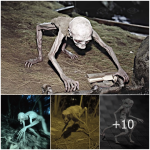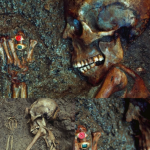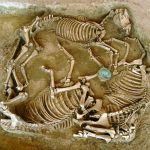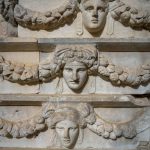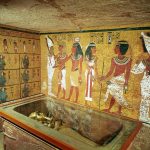Crete’s Snake Goddess, 1600 BC relic
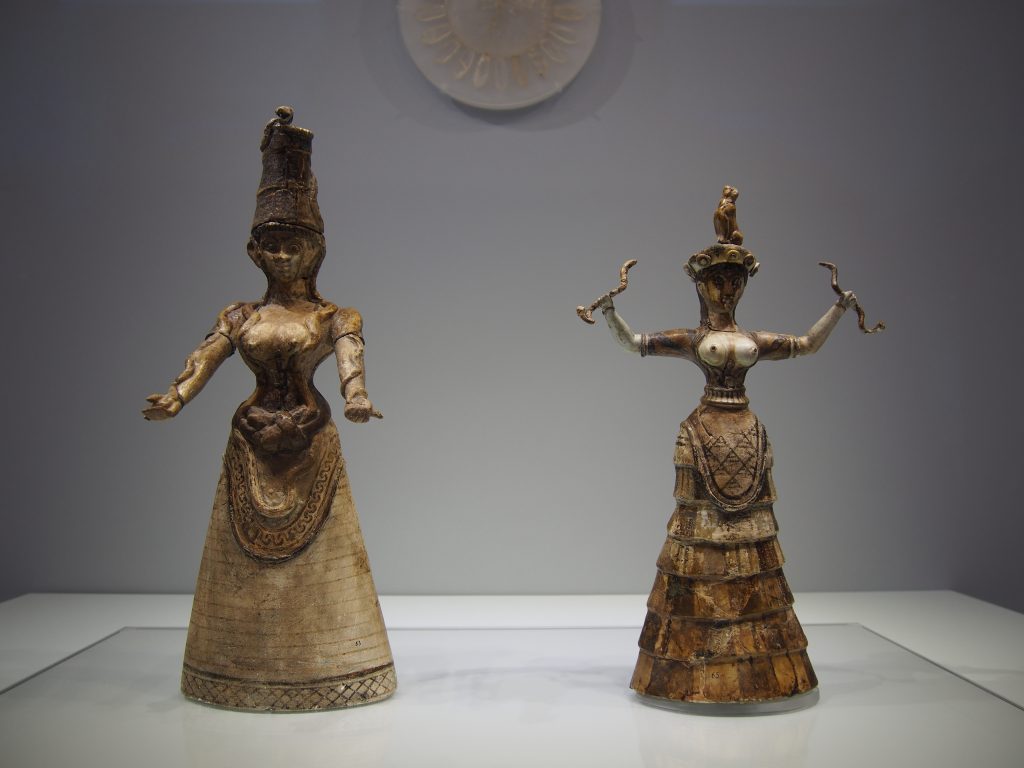
In the hallowed halls of the Heraklion Archaeological Museum, nestled on the sun-kissed shores of Crete Island, Greece, lies an artifact that has captured the imagination of scholars and enthusiasts alike for centuries—the Minoan Snake Goddess figurine. Dating back to 1600 BC, this enigmatic relic offers a tantalizing glimpse into the rich tapestry of Minoan civilization and the spiritual beliefs that permeated their society.
Crafted with exquisite detail and undeniable artistry, the Snake Goddess figurine stands as a testament to the sophistication and ingenuity of the Minoan people. Fashioned from terracotta and adorned with intricate jewelry and regal attire, she exudes an aura of divine authority and maternal protection. In her hands, she cradles serpents, symbols of renewal and fertility, invoking the sacred mysteries of the natural world.
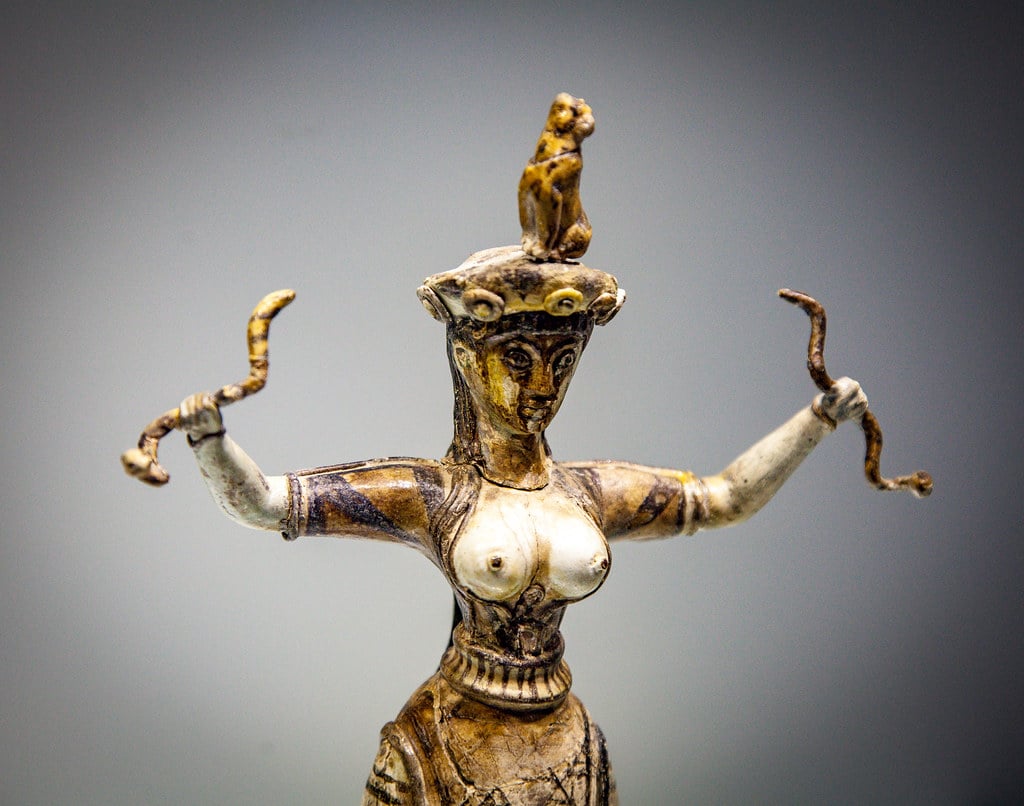
Yet, despite the beauty and craftsmanship of the figurine, it is the mysteries that surround it that have captured the imagination of scholars and historians for generations. Who was the Snake Goddess, and what role did she play in Minoan society? Was she a deity worshipped by the masses, or a symbol of power and authority wielded by the elite? The answers to these questions remain elusive, lost to the sands of time and the vagaries of history.
One theory posits that the Snake Goddess represents a powerful deity associated with nature, fertility, and the cycles of life and death. In Minoan religion, serpents were often revered as symbols of regeneration and transformation, their shedding of skin mirroring the eternal cycle of renewal. As such, the Snake Goddess may have been invoked in rituals and ceremonies aimed at ensuring the fertility of the land and the prosperity of the community.
Another interpretation suggests that the Snake Goddess was a symbol of female empowerment and divine authority, revered as a protector of women and children. In a society where women enjoyed a higher status compared to their counterparts in other ancient civilizations, the image of a powerful female deity may have held particular significance, serving as a source of inspiration and empowerment for Minoan women.
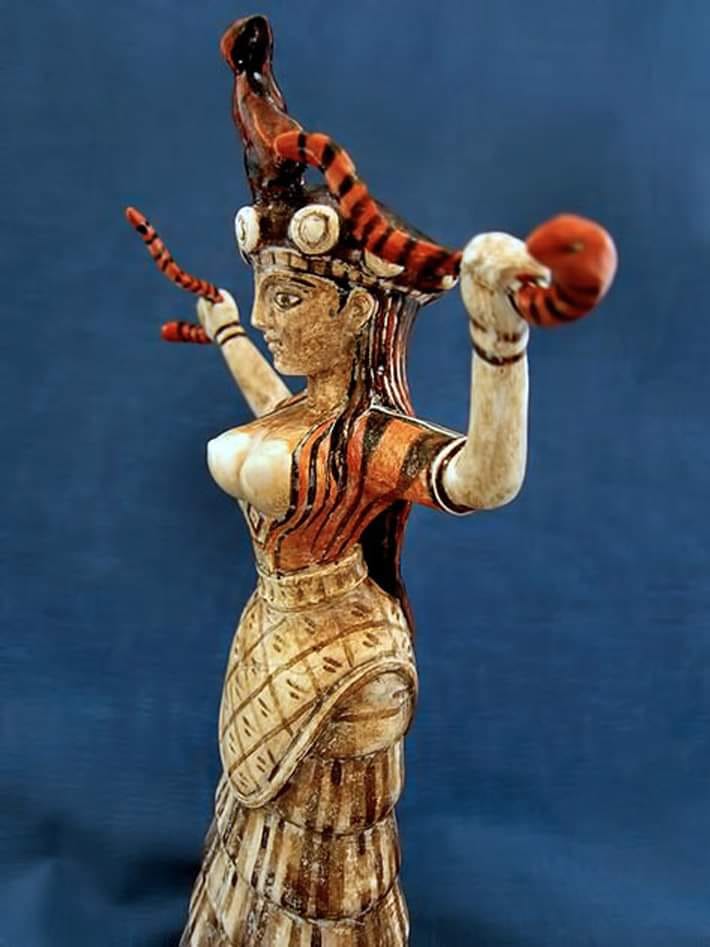
Yet, despite the myriad interpretations and speculations, the true identity and significance of the Snake Goddess remain shrouded in mystery. Like a puzzle with missing pieces, she continues to defy attempts at unraveling her secrets, her enigmatic smile and piercing gaze inviting speculation and contemplation.
As visitors to the Heraklion Archaeological Museum gaze upon the Snake Goddess figurine, they are transported back in time to an era of myth and legend, where gods and goddesses walked among mortals, and the boundaries between the natural and supernatural worlds blurred. In her presence, one cannot help but feel a sense of reverence and awe, as if in the presence of something greater than oneself.
And so, the mystery of the Minoan Snake Goddess endures, a testament to the enduring allure of ancient civilizations and the timeless quest for understanding. As scholars continue to uncover new evidence and insights into the world of the Minoans, one thing remains certain—the Snake Goddess will continue to captivate and inspire all who seek to unravel her secrets, beckoning them into the depths of history and myth.
